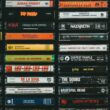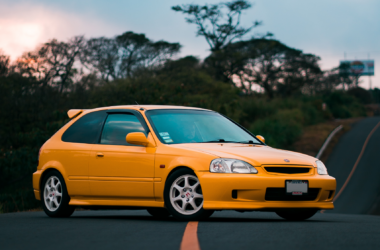Few debates in car culture spark more passion than JDM vs. American muscle. This isn’t just about horsepower—it’s about philosophy. JDM thrives on precision, innovation, and turbocharged insanity, while muscle cars deliver raw, unfiltered power with a side of tire smoke. Both have built legends. Both have die-hard fans. And both make hearts race.
So, which one rules the streets?
JDM: Precision, High Revs, and Endless Potential
Japan’s performance cars aren’t just about speed—they’re about feeling every turn, every shift, every ounce of power. The Nissan Skyline GT-R, better known as “Godzilla,” was so dominant on the track that Australia had to ban it just to give other cars a chance. The Toyota Supra became a household name thanks to Fast & Furious, proving that with a 2JZ and a big turbo, it could humble even the most expensive supercars. And then there’s the Mazda RX-7, a car that drifts so effortlessly it feels like it was built to dance sideways.
What makes JDM special isn’t just the numbers—it’s the way these cars make you feel. Take a Honda S2000, revving all the way to 9,000 RPM—it screams like a fighter jet. A WRX STI? It grips the road so hard, it feels like it could claw its way up a mountain. These cars aren’t just machines—they’re experiences. These cars reward skill, demand precision, and turn every road into a playground.
American Muscle: Unapologetic, Tire-Shredding Power
Muscle cars don’t do subtle—they make an entrance and let the whole block know it. These machines are all about big V8s, brutal acceleration, and an exhaust note that rattles windows. The Dodge Hellcat? It doesn’t care about handling—it just wants to light up the tires at every stoplight. The Shelby GT500’s supercharger whine? That’s the kind of sound that sends chills down a gearhead’s spine. And the classics—the ‘69 Dodge Charger, the Chevelle SS 454—aren’t just cars, they’re rolling statements of pure, unapologetic power.
Driving a muscle car is violence in motion. Stomp on the gas in a Mustang GT, and the torque throws you back like a rollercoaster. These cars aren’t about finesse—they’re about making an entrance, scaring supercars in a straight line, and letting the V8 do all the talking.
Tuning: Two Worlds, One Passion
JDM and muscle cultures love mods, but the approach is wildly different.
JDM tuning is all about squeezing absurd power from small engines. The RB26 (Skyline GT-R) and 2JZ (Supra) can handle 1,000+ HP with the right setup. Lightweight cars like the Civic Type R turn into turbocharged monsters. Whether it’s drifting, time attack, or street racing, JDM cars thrive on precision builds.
Muscle car tuning is about brute force. Want more power? Slap on a supercharger, swap in a crate engine, or just add more displacement. Muscle car guys don’t care about turbo lag—they want instant torque and a sound that makes pedestrians jump. Quarter-mile dominance is the goal, and muscle cars deliver it in spades.
The Verdict? Depends on the Driver.
Love high-revving, turbocharged precision? JDM is the way. What about V8 thunder and tire-melting torque? Muscle cars are unbeatable.
At the end of the day, both cultures live for speed, power, and passion. Whether it’s a Skyline screaming through a canyon or a Hellcat leaving stripes on the pavement, car lovers respect the thrill.
And when a Supra and a Camaro pull up at a stoplight, one thing’s for sure—everyone’s watching.









